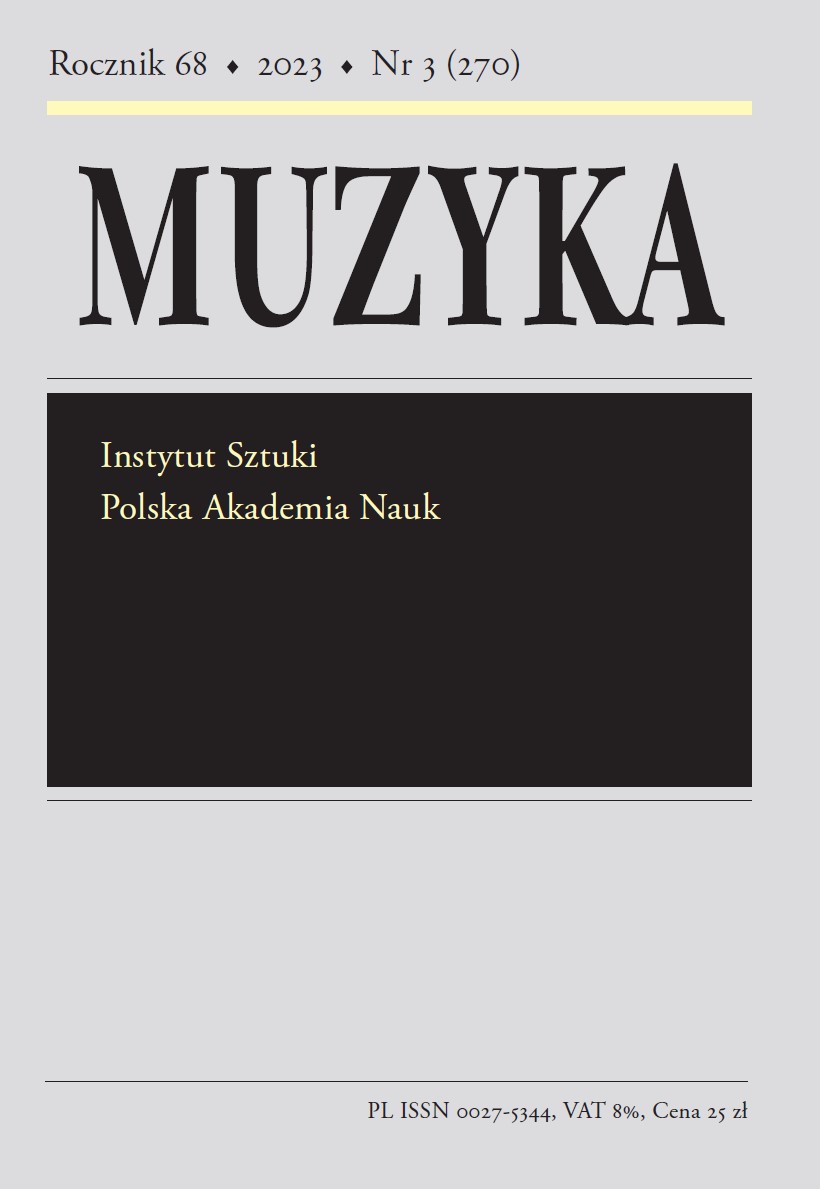Adeodato Barochius – zakonnik augustiański wielu talentów. Glossa do artykułu o życiu muzycznym w warszawskim kościele św. Marcina
Adeodato Barochius – An Austin Friar of Many Talents. A Gloss for the Paper on Music Life at St Martin’s Church, Warsaw
Author(s): Ryszard MączyńskiSubject(s): Music
Published by: Instytut Sztuki Polskiej Akademii Nauk
Keywords: Adeodato Barochius;seventeenth-century music history;seventeenth-century painting;Warsaw;Augustinians;Piarists
Summary/Abstract: The recently published paper by Barbara Przybyszewska-Jarmińska, Informacje ze źródeł augustiańskich o życiu muzycznym w warszawskim kościele św. Marcina w XVII wieku oraz działających w tym czasie muzykach królewskich [Information from Augustinian Sources Concerning 17th-Century Music Life in Warsaw’s Church of St Martin as well as Royal Musicians from that Period] (Muzyka 66 (2020) no. 2, pp. 25–61) is an extremely conscientious and fruitful attempt to map out the previously unexplored history of musical achievements at the Warsaw house of Ordo Eremitarum Sancti Augustini. One of the persons mentioned in that paper is Father Adeodato Barochius, who came to the Polish-Lithuanian Commonwealth from Italy.The present note refers to an omitted source, namely, letters sent from Warsaw by Piarist father Giacinto Orselli to the founder of Scholarum Piarum, the would-be saint Joseph Calasanz in Rome. Their correspondence from late 1642 mentions an ‘Austin friar from Perugia’ who was at the same time ‘a musician of His Majesty the King’. The profession and place of birth make it possible to identify this person, though not mentioned by name, as the said Barochius. There are also two mentions of the fact that he created a painting of Saints Primus and Felician for the Piarists.The Piarist order had freshly been brought to Warsaw by the efforts of King Władysław IV Vasa, who provided funding for a Piarist house in the capital of the Commonwealth, and, in order to raise the prestige of the newly established monastery, made it a gift of relics once received from Pope Urban VIII – bones of saints Primus and Felician, disinterred at his request at the vaults of the Roman church of Santo Stefano Rotondo. These two saints were the king’s personal patrons since he had been born on their feast day, 9th June. The Augustinian friar’s painting was to be placed in the altar of the Piarist oratory.Barochius, a Perugia-born Austin friar, was also the king’s chaplain and a member of the royal ensemble, a bass singer and composer, guardian of the Fraternity of St Cecilia at Warsaw’s St Martin’s Church, the donator of that church’s altar of the Guardian Angel, and (a previously unknown fact) – the author of religious paintings (his work for the Piarists could hardly have been his only attempt in this field). His abilities are hard to assess today since the painting is now lost and others, if they survive, have not been attributed to him. He was nevertheless clearly a man of many talents.
Journal: Muzyka
- Issue Year: 68/2023
- Issue No: 3
- Page Range: 111-122
- Page Count: 12
- Language: Polish

